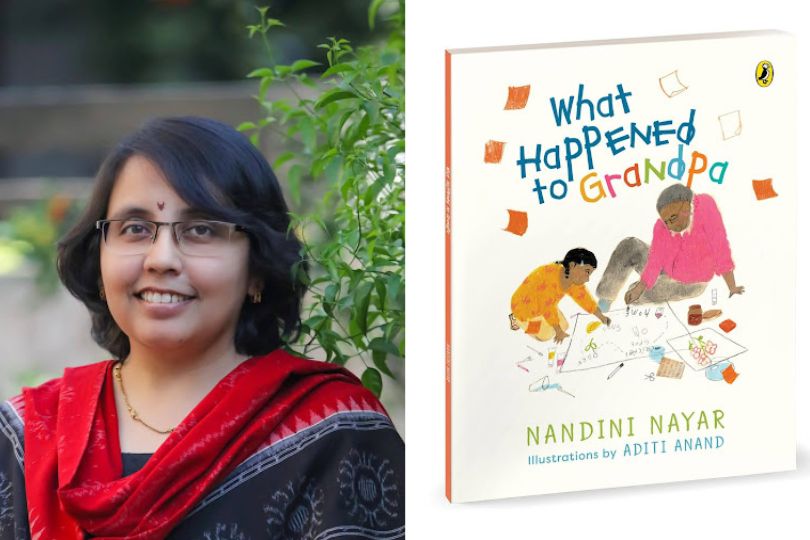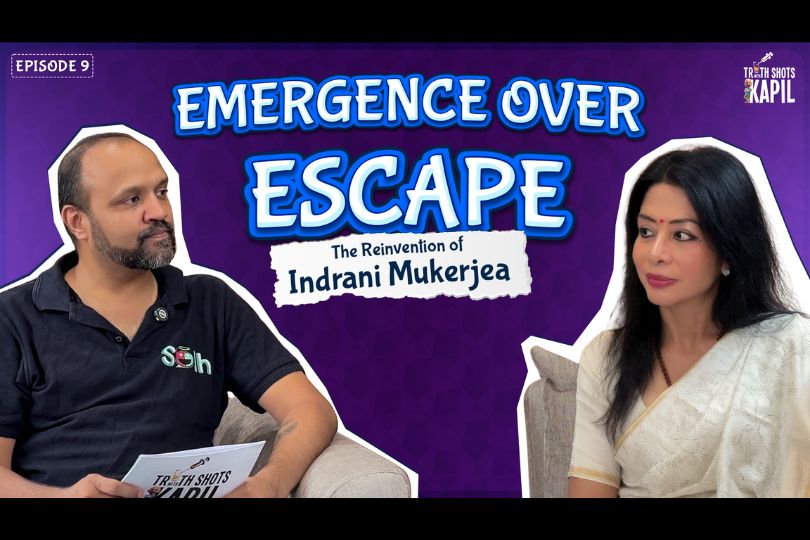Interview with Nandini Nayar Author of What Happened to Grandpa
Nandini Nayar’s 'What Happened to Grandpa' sensitively introduces young readers to themes of memory and loss, fostering empathy and understanding.on Oct 28, 2024

Nandini Nayar is India’ s most prolific children’ s writer. In a career spanning less than 20 years she has published 53 books with well-known Indian publishers like Tulika, Karadi, Amar Chitra Katha, Scholastic, Puffin, HarperCollins, Juggernaut, Pratham, Eklavya, Talking Cub and Mango. Her international publishers include Oxford University Press, Pakistan, Frances Lincoln and Tricycle Press. In addition, Nandini has been a regular contributor to iconic children’ s magazines like Tinkle, Hoot, Toot, Dimdima and The Children’ s Magazine and newspapers like The Hindu and Sakal Times.
Generations of readers recognize her as the author of well-loved picture books like What Shall I Make? and Where is Amma? What Shall I Make? was named an outstanding book by the United States Board on Books for Young Readers. Pranav’ s Picture, What Shall I Make?, Guddu’ s Photo and The House of Fourteen Cats feature in the list of books recommended by the Central Board of Secondary Education (India). What Shall I Make? and What Did You See? feature in 101 Indian Children's Books We Love (Zubaan).
For older children Nandini has written novels, collections of short stories, creative biographies and retellings. Her four books in the series The Diary of an Indian Schoolgirl are immensely popular and both Apoorva’ s Fat Diary and Camp Sweets won the BICW award in 2019. Mouse and Bear, The Perfect Chair and The House of Fourteen Cats won prizes in the competition organized by the Children’ s Book Trust.
Her other books for older children include The Curious Case of the Sweet and Spicy Sweetshop, The Great River Magic and The Girl in the Mirror.
Frontlist: The way Grandpa's memory slips away in What Happened to Grandpa is both touching and profound. How did you decide to approach such a sensitive topic for children?
Nandini: I have been writing for children for over twenty years, and in this time, I have learned that you can present most topics to children as long as you do it in a way that is accessible to them. This is the reason why I don’t allow myself to be restricted when it comes to the choice of topics. My picture book, Sometimes Mama, Sometimes Papa, is the story of a child whose parents live separately. To the child reader, it does not matter why the parents live separately. What matters is how the protagonist reacts to it, which is what they focus on.
Another of my picture books, My Grandfather’s Stick, is about an aging grandparent. In the sessions I did around this book, I found that children understood the changes that came with old age and showed sensitivity when discussing why the stick is so important for a grandparent.
My own grandmother went through a period where she could not recognize us, and my son witnessed the confusion and fear she went through. She had always been very fond of him, but her illness changed her. I was struck by how we tend to identify people only by the symptoms of their final illness and forget all the qualities that made them the amazing human beings they were. This was one of the reasons I decided to write about Grandpa and his illness. I feel we need to remember the people, not see only their illness and the symptoms that come with it.
Frontlist: Writing about memory decline in a child-friendly way must have been challenging. How did you balance the emotional weight of the subject with making the book accessible and hopeful for younger readers?
Nandini: As adults, we allow ourselves to be weighed down by the disease, its name, and the symptoms associated with it. This blinds us to the small but very significant ways in which the person suffering from the illness changes. Children notice these changes because they are observant and they have great memories. When writing about Grandpa’s illness, I focused on the things that children would pay attention to. A child would notice if the grandparent forgot names or if the grandparent got muddled when walking down the familiar roads.
The bond between a child and the grandparents is very strong. Grandparents tell children things they might not tell other adults. And children are appreciative, sympathetic, and uncritical listeners. I focused on these aspects of the relationship to come up with ways in which the child helps her grandfather and the different ways in which she appreciates and celebrates him.
Frontlist: Your book gently touches on themes of loss and memory. What was the writing process like when crafting these delicate moments, especially for a young audience?
Nandini: This story came from a deeply personal experience with my own grandmother. Her final illness, which was never diagnosed, turned her into a suspicious person. I felt like I needed to know more about similar cases, so I read accounts of people who work with patients suffering from various diseases. What struck me was how these and other illnesses often wipe out any vestiges of the people and their personalities. All their families remember the symptoms of the disease. So, I focused on crafting a story that celebrated the person and their accomplishments rather than focusing on the way the disease had completely altered them.
Since this story was meant for children, I focused on the kinds of things that a child would notice and remember about a grandparent. So, the child in the story remembers that her grandpa likes jam sandwiches. She remembers that he likes silly jokes. These instances came from observing other grandparents with their grandchildren.
Frontlist: As an author, was there a particular scene or moment in What Happened to Grandpa that felt the most emotionally difficult to write? How did you navigate that challenge?
Nandini: All stories are difficult to write. The challenge is to transfer the idea in your head onto paper and help readers see the world you imagined. But this story, in particular, was difficult to write. All too often, I had to stop to think about my Aaji and mourn the fact that we had allowed her illness to become the most important thing about her. I wanted to change that for others who are dealing with illness in the family. So, I found things to celebrate about grandparents. The things that the child in the book remembers about her grandfather are an amalgamation of facts about different grandparents. My father loves jam sandwiches, and my mother learned to swim in a river. My cousin’s son remembers all the silly jokes he hears at school so he can tell his grandfather.
Writing about these things made me hope that others too would pause to think of the individual qualities of the people in their families and celebrate them, rather than allow their illness to overshadow these.
Frontlist: Children's emotional well-being is often influenced by the stories they read. What role do you believe books like What Happened to Grandpa play in promoting emotional resilience and understanding in young readers?
Nandini: When dealing with children, we avoid discussing topics that we consider difficult or sensitive. However, children are curious and ask questions about things like death, divorce, and illness. Many parents flounder, unsure of how much to tell their children. Even when family members fall ill or die, parents try to shield the children. Books like What Happened to Grandpa work as conversation starters. They allow children to get a sneak peek at reality, and they give them an opportunity to ask questions that have troubled them. For parents too, books like these are useful. Yes, they deal with topics like illness and death, but they do this in the guise of presenting a story. This does help to soften the blow of reality; it helps to make difficult and sensitive topics easier to navigate.
Frontlist: With World Mental Health Day approaching, how important do you think children's literature is in fostering early discussions about mental health?
Nandini: Children’s books can be hugely versatile and can work for any reader at any age. Books meant for children cannot afford to be wordy or carry an overt message. Instead, they rely on imagination and a careful choice of words to bring a story alive. They focus on interesting aspects and forge unexpected links to create narratives that entertain even as they make you think. Books like these can help initiate conversations about mental illness or mental health. This can help normalize the discussions around the topics, often considered taboo. Such early discussions and acceptance of these topics are essential for a balanced and sympathetic understanding of the people around us.



.jpg)






.jpg)

.jpg)
.jpg)
.jpg)
.jpg)
.jpg)
.jpg)

.jpg)










Sorry! No comment found for this post.